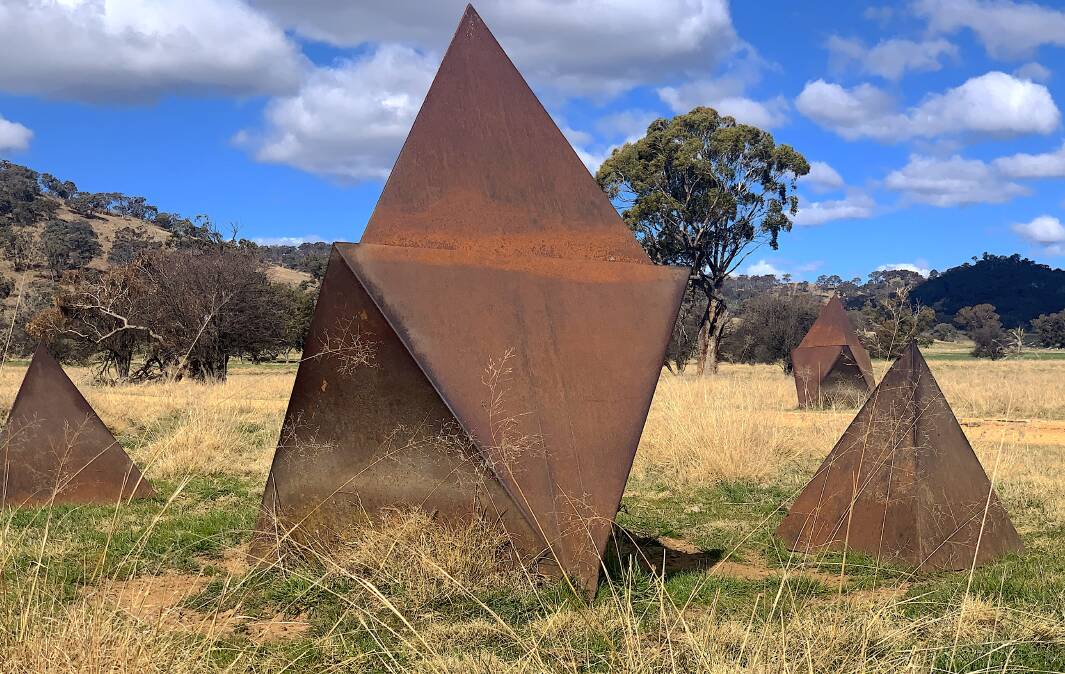
We can't quite believe our eyes. Ahead, several steel pyramid-shaped objects, some welded together, are strewn in a paddock, their rusting peaks rising above clumps of grass and reflecting the afternoon light. It's as if we've walked onto a page of a surrealist's sketchbook, either that or an open-air workshop for an Egyptian version of Cockington Green.
One thing is for sure, it's not a sight you'd expect to see while leading a tour group through farmland in the Lanyon Valley, just south of Tuggeranong.
Many theories abound as to their origins and purpose. One perplexed participant suggests "Perhaps they are some sort of bush airstrip markers" while another hypothesises, "Maybe they are out-of-place tank traps like those strategically placed on Australian beaches during World War II as a defence against amphibious attack". Meanwhile, another attendee is convinced "Oh, surely they are calling cards from aliens".
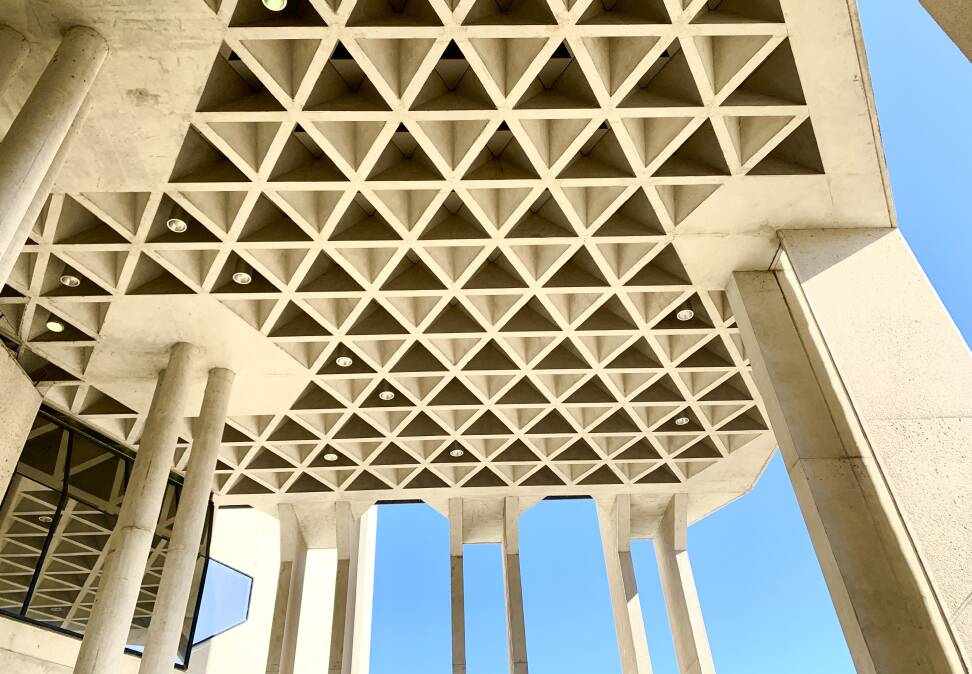
While I'm happy to entertain the wide range of theories (OK, not the last one), my immediate thought is it's a sculpture. Have a close look, they are somewhat similar, although not as shiny or as curved as Bert Flugelman's Cones - one of my regular hangouts in the National Gallery of Australia's Sculpture Garden. In fact, they probably more closely resemble Earthwork, another of Flugelman's sculptures, six tetrahedrons he bizarrely buried in Commonwealth Park in 1975.
Luckily, the property owner arrives on her quad bike just in time to put us all out of our misery.
"Oh, they're just some of the moulds that were used in the construction of the coffered ceiling of the National Gallery of Australia," she deadpans.
Heck, little wonder no one guessed correctly.
It turns out that one of the farmer's neighbours worked on the construction of the gallery back in the late 1970s and after the job was complete, stashed away a heap of the moulds on his property.
"When we were looking for something unusual to add to our driveway, we thought they'd work a treat," she says. Well, she's certainly correct there.
Following the tour, which was supposed to be about early European settlers in the Lanyon Valley, and not unusual out-of-place template treasures, I make a pilgrimage to the gallery to check out the curious ceiling.
Despite the gallery attendant I asked not being overly cluey on the coffered ceiling (it's funny you are often so busy looking at the walls in a gallery, you rarely look up), it's clear the moulds in the paddocks are a perfect fit for some of the triangular and other shapes embedded in the ceilings both outside and inside the gallery.
According to the gallery's architect's statement (Col Madigan, 1976), the curious ceiling is an integral part of the design of the building. "The equilateral triangle [manifesting itself in the pyramid shape] is the nucleus of this structural code dictating the dimensions and character of the building and producing a desirable unity in all areas of the gallery," it states.
It continues: "This is realised primarily in the triagrid concrete space frame ceiling/floor systems serving the small galleries and extends to the steel space frames spanning the great gallery spaces."
There you have it. Mystery solved. But try telling that to the alien aficionado.
Tank traps?
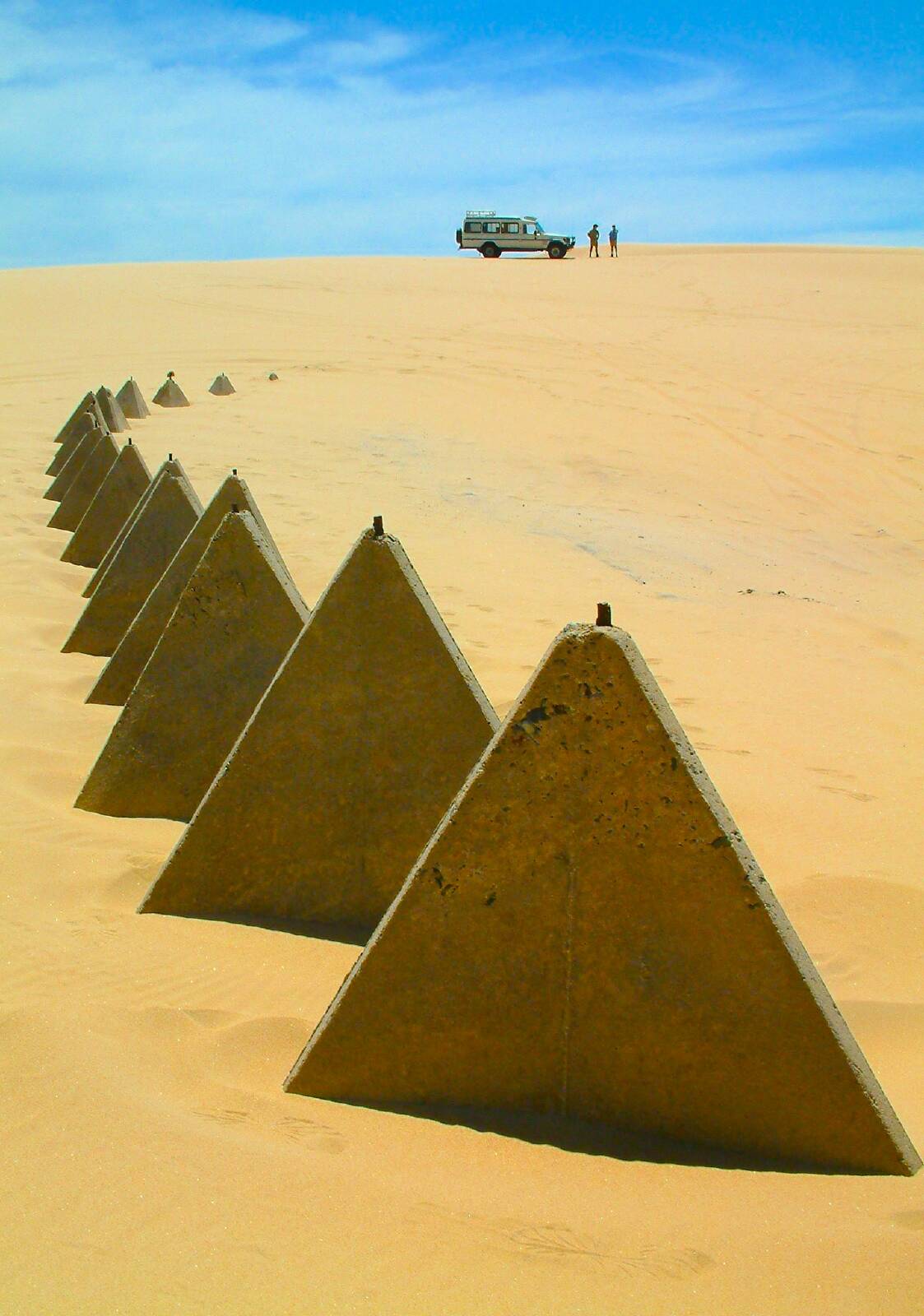
During World War II, concrete tank traps, similar in size and shape to some of the steel moulds now surrounded by grazing cows in the Lanyon Valley paddock, were installed along several beaches on the east coast of Australia.
There are apparently six of them buried beneath sand at Shelley Beach, near Manly in Sydney, but one of the best places to photograph these war-time relics is at Stockton Beach just north of Newcastle, where hundreds of the concrete pyramid-shaped barriers, each stamped with 1943, line the beach. Although they are often buried under sand drifts, big seas in recent years have exposed many of them.
Still on peculiar fortifications, many years ago, while bushwalking near Tenterfield in northern NSW, I stumbled upon another kind of tank trap, this one comprising a mix of wooden pillars and concrete walls. There were erected during World War II as part of the so-called "Brisbane Line" - the second line of defence if the northern part of Australia fell into enemy hands.
Bert and his buried sculpture
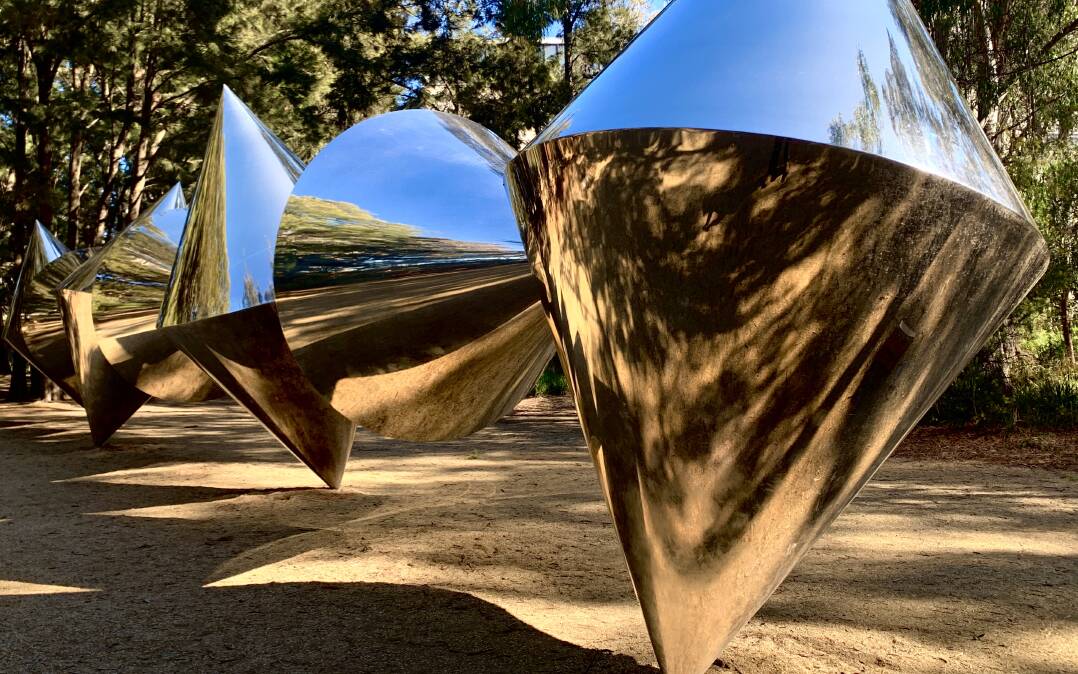
In the 1970s and 1980s, Bert Flugelman created major public artworks for display in cities across Australia. Many of his commissioned works from this period have reflective stainless-steel surfaces and a playful repetition of geometric form that encourages public interaction.
While most of these sculptures like the Dobell Memorial (displayed vertically) in Sydney and Cones in the NGA's Sculpture Garden can readily be viewed (and appreciated) by the public, his 1975 creation, Earthwork, cannot. At Flugelman's request, soon after completion, the six aluminium tetrahedrons were promptly buried by a bulldozer in a trench in Commonwealth Park in 1975.
Apparently, the fact we can't see the work shouldn't stop our appreciation of it. In fact, it was reported at the time that visitors to the site are meant to find that "the artistic merit in earth sculpting lies in the way things are done, not in the finished work".
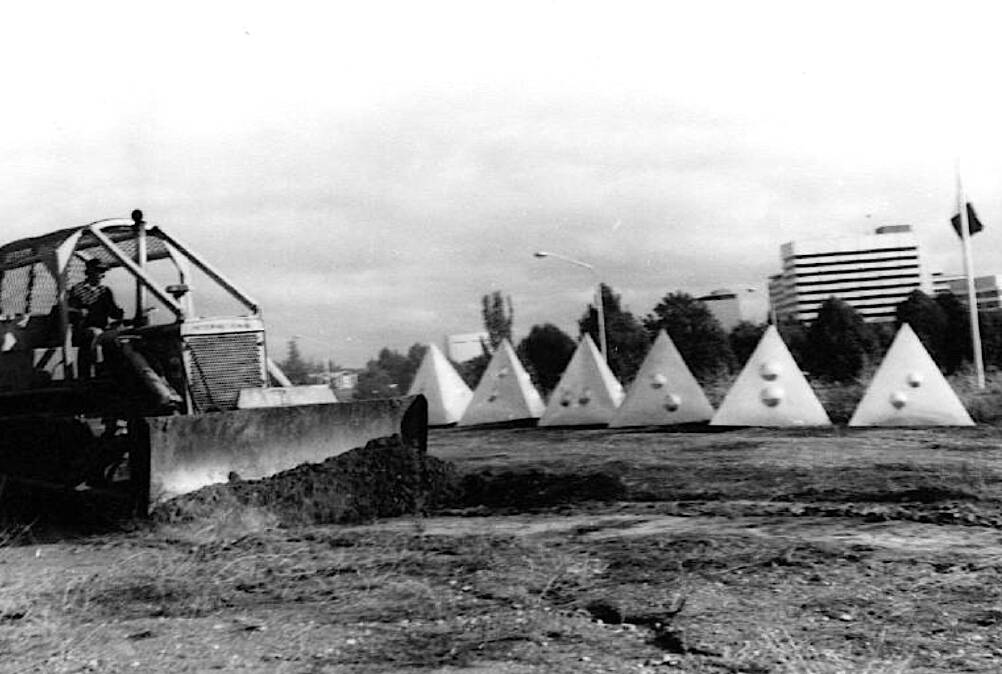
You too can "experience" this "artistic merit" by visiting Commonwealth Park where if you look hard enough, you'll see a plaque in the approximate location of where the tetrahedrons are buried. If you want to locate the exact spot with a metal detector or ground penetrating radar, you may have to wait a few weeks, for the gardeners have fenced off much of the park while they put the finishing touch to this year's Floriade.
Memories from behind the stacks
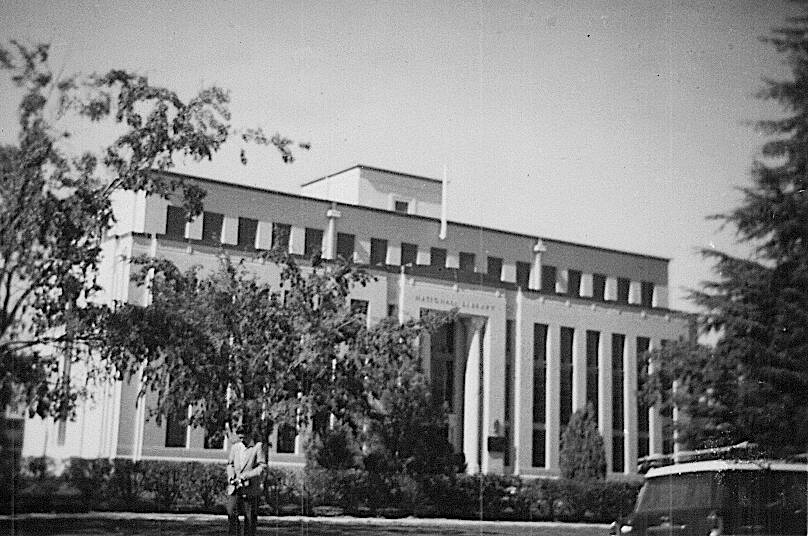
Many readers continue to reminisce about the former National Library building which, until it was demolished in 1968, stood on Kings Avenue in Barton on the site of the current Edmund Barton building. Some readers even dug up old photos of the much-loved building such as this one taken by Brian Rope of Lawson who "spent a lot of time studying in the library".
Meanwhile, Mike Edwards of Merimbula recalls when Lyndon Baines Johnson (LBJ), the first US president to visit Australia, was driven from the airport along Kings Avenue past the library in October 1966.
"We (all the public servants in Barton) gathered along the road in front of the library to watch his motorcade pass," recalls Mike, adding "the motorcade unexpectedly stopped right in front of the library".
"LBJ suddenly got out of the big black limo and his bodyguards, headed by Rufus Youngblood (I always remember that name), jumped around him looking quite perturbed," recalls Mike.
The reason for the stop? An emergency? LBJ wanting to check out the library's Dewey decimal classification system was in order? Not quite. POTUS had spotted a bunch of American nuns standing in the crowd and went over to embrace them. "After hugs and handshakes, he was shuffled back to his beast car and it carried him on to Government House," recalls Mike.
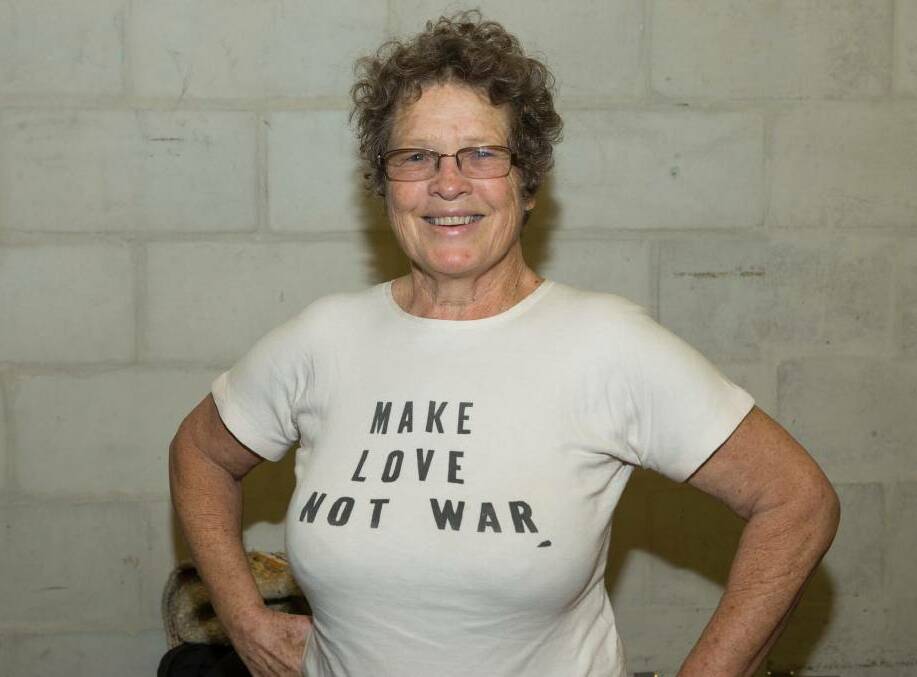
Later that week a crowd gathered outside the Canberra Rex on Northbourne Avenue, where LBJ was staying, to protest the war in Vietnam. At the protest, a local lady (Megan Stoyles) wore a T-shirt emblazoned with the words "Make love not war", recalls Mike, adding "photos of her ended up on magazine covers and newspapers around the world".
I've often heard stories that an extra-large bed was craned into the suite on the 4th floor the Rex for LBJ, but I'm yet to see conclusive evidence to confirm this. Is it an urban legend? Someone must know.
WHERE IN CANBERRA?
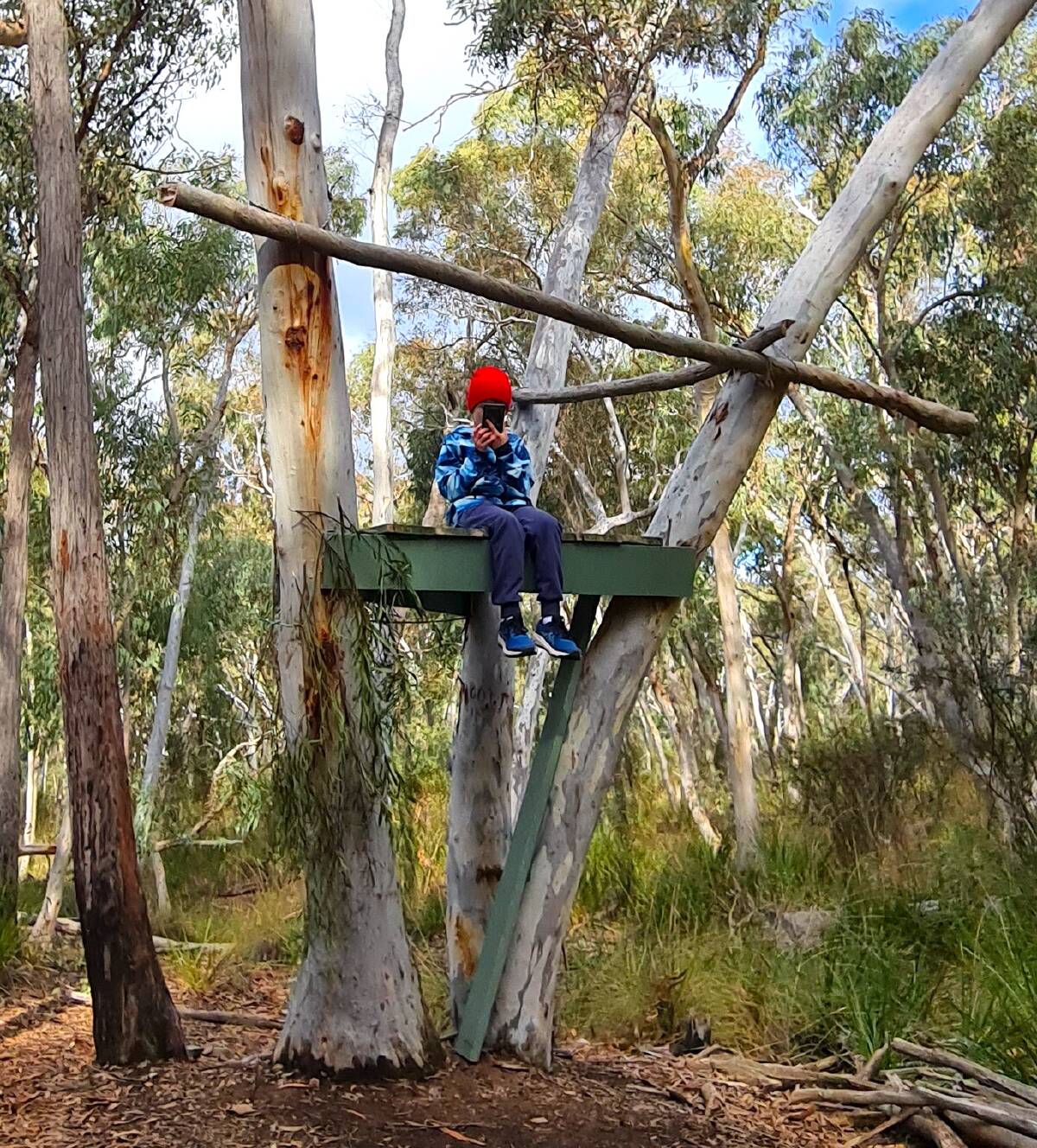
Rating: Tough
Clue: Not far from a well-known frost hollow
How to enter: Email your guess along with your name and address to tym@iinet.net.au. The first correct email sent after 10am, Saturday August 27 wins a double pass to Dendy, the Home of Quality Cinema.
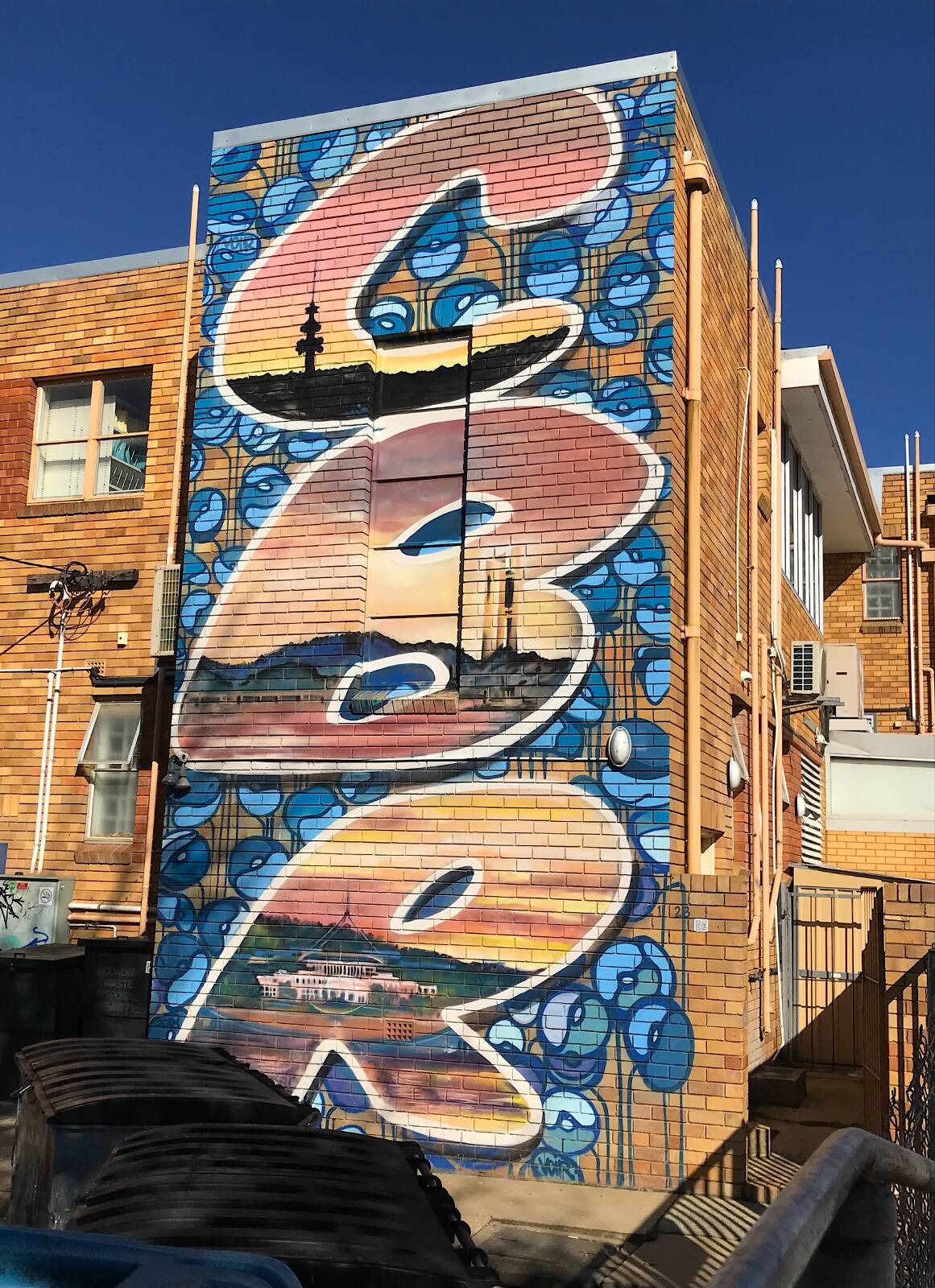
Last week: Congratulations to Sam Spencer of Greenway who was first to identify last week's photo as the CBR mural at the back of the Tiffen & Co (mortgage brokers) offices at 23 Jardine Street, Kingston. Sam, a jubilant first-time winner, just beat June McKenzie of Fisher and Rebecca Scouller of Forrest to the prize.
MAILBAG
Last week's feature on Champagne Corner and other nicknames for parts of the old Hume Highway prompted Jonathan Doyle of Forrest to highlight "Supply Corner" was just south of Jugiong. "It was a badly cambered right-hand corner at the bottom of the hill," reports Jonathan, adding, "a 'favourite' truck rollover was in the 1970s, when a truck loaded with beer toppled over ... the locals just shook a can and if it didn't fizz, it went straight into the ute."
SIMULACRA CORNER
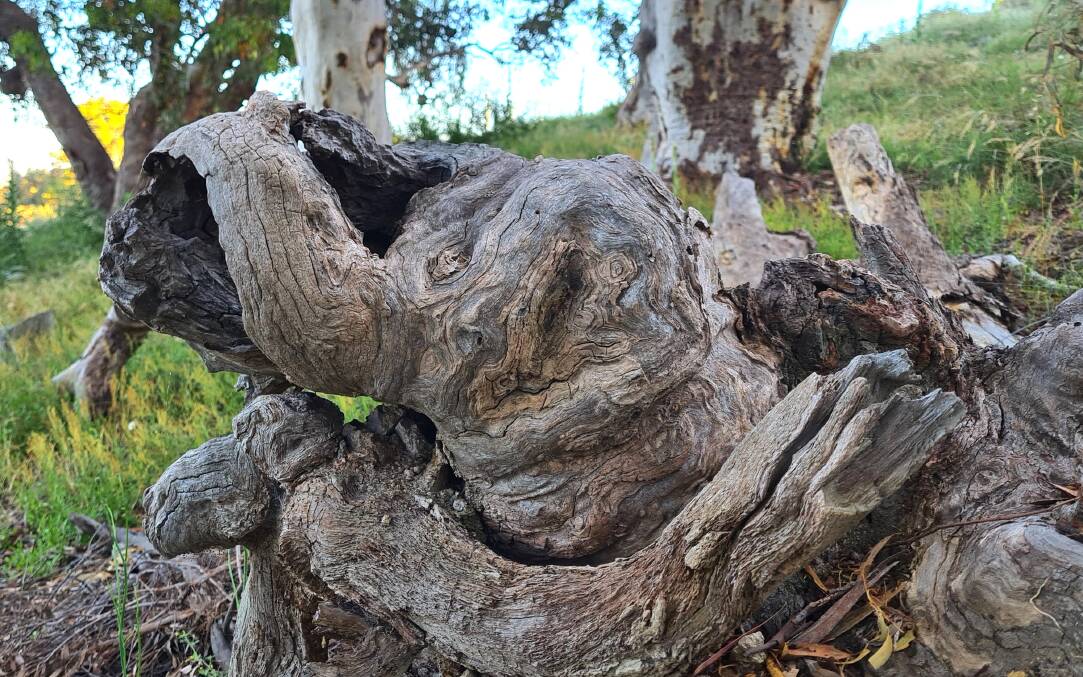
Chris O'Keefe of Gilmore, who often walks along the disused Tuggeranong rail line with her husband, was recently stopped in her tracks (sorry!) by the sight of this old tree stump that she reckons resembles "the trunk, head and eye of an elephant". What do you think?
CONTACT TIM: Email: tym@iinet.net.au or Twitter: @TimYowie or write c/- The Canberra Times, GPO Box 606, Civic, ACT, 2601
We've made it a whole lot easier for you to have your say. Our new comment platform requires only one log-in to access articles and to join the discussion on The Canberra Times website. Find out how to register so you can enjoy civil, friendly and engaging discussions. See our moderation policy here.







